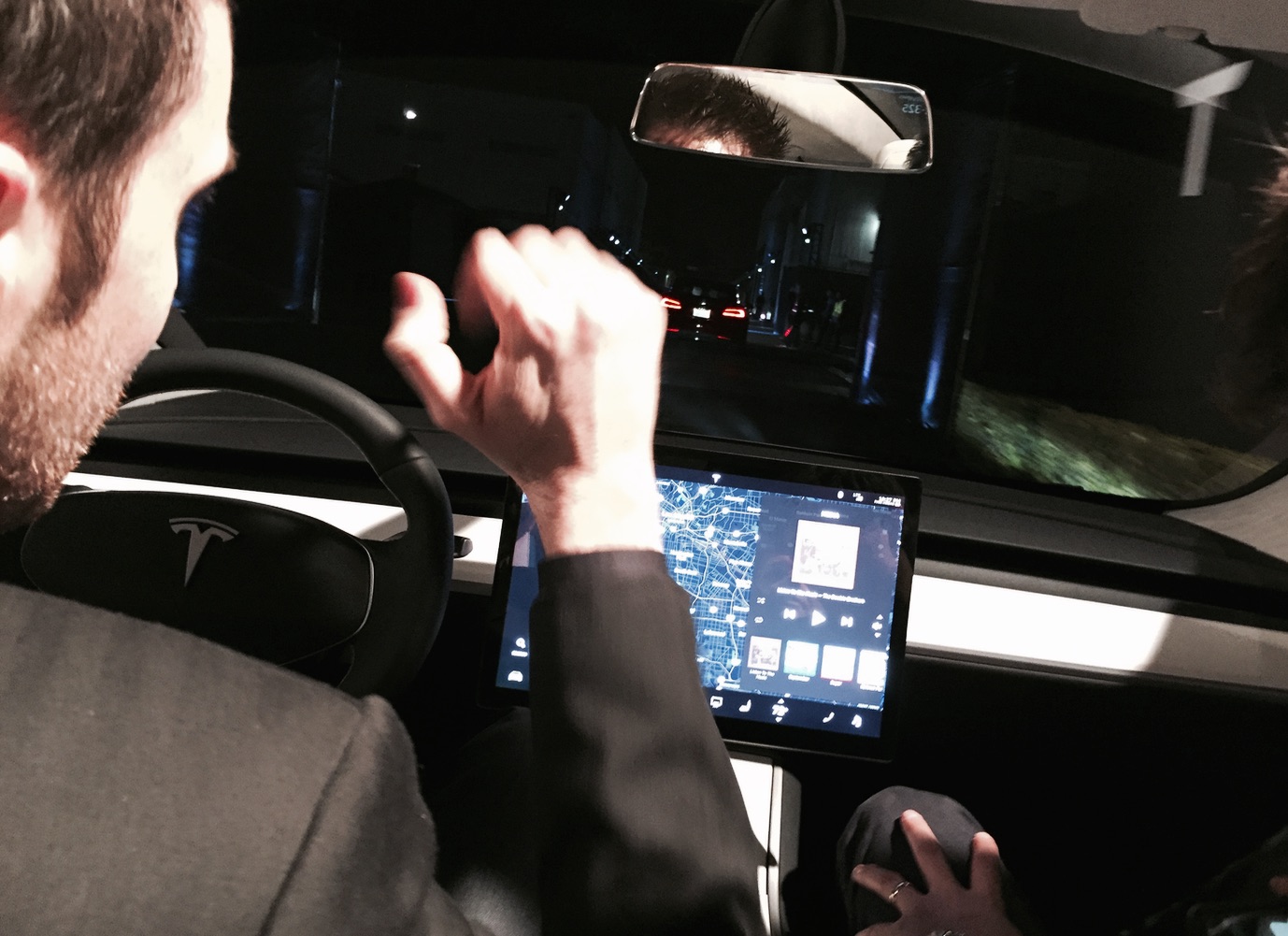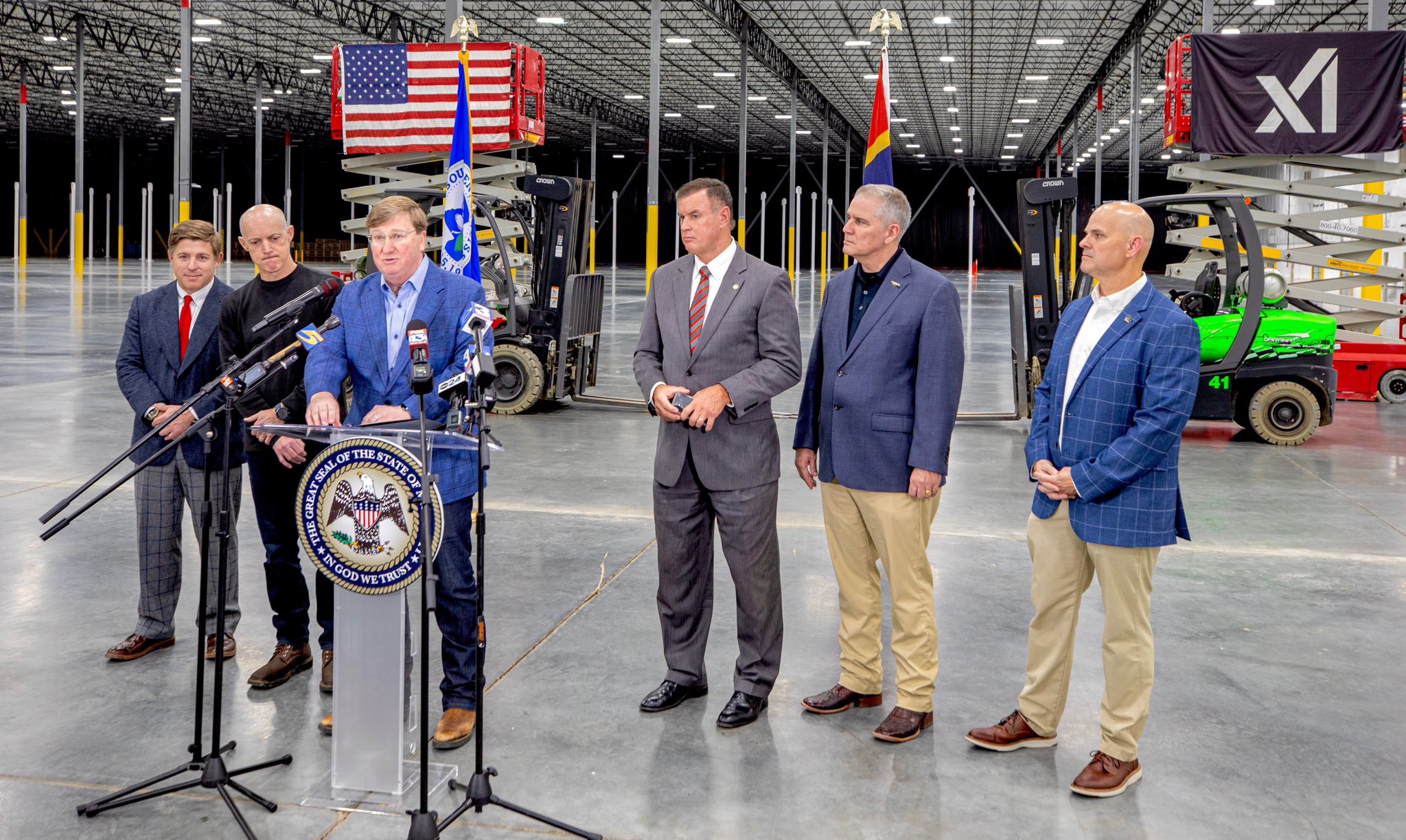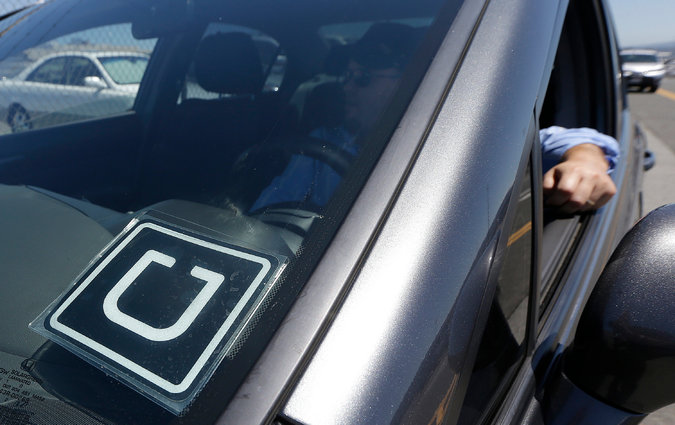News
Who will forego owning a car when Tesla’s ride-sharing service becomes available?

Picture this: no car payment, no car insurance, no circling the block looking for parking and no depreciation. Foregoing car ownership sounds pretty great. Why is it then that so many Americans insist on having a car? Simply stated: freedom.
Somewhere after the years of public transit, biking many miles or begging your parents for a ride, most of us got our own set of wheels. For some of us, it came in the form of a $900 death trap of a car that shook violently above 55 miles per hour. For others, an uncool but reliable toaster of a car. The car world as we have known it has always meant that unless you live and work in a major city with great public transportation, a personally owned vehicle is about the only convenient way to travel from point A to point B on a regular basis. This is especially true for families. If you’ve never been on a bus or subway with a baby in a stroller, spare yourself the circus. It’s also true depending on exactly which neighborhood you live in, even if you are in a major city. Taxicabs, where available, are far more convenient than public transportation, but certainly aren’t widely available outside of the most densely populated metro areas and at least to me, have always been cost prohibitive to use for any more than a special occasion. To reiterate the point, we all like freedom. And convenience. We like to go where we want to when we want to, without standing on a bus or watching a train timetable.
Ride-sharing services such as Lyft and Uber have upended the traditional taxicab model and, in many markets, undercut the price while providing a superior service. I certainly enjoyed riding in a flawlessly clean Kia Optima Hybrid Saturday night with a chatty and friendly driver far more than the high mileage, stale smelling, yellow Crown Vics that pass as taxis in Philly. The before and after experience are far better as well. Smart phone apps tell you who will be picking you up, in which kind of car, and exactly how far away they are. Cabs still require being flagged down and the joke’s on you when the 5th one passes you by with the “vacant” indicator light in use but passengers in the rear. Afterwards, you get notified that your credit card was charged in some amount that you had already been prepared for. In a taxi, you either pull out cash when you see the ever-surprising sum due or watch the driver give you an attitude for using their in-car credit card machine.
Trends are already developing among young adults to move into thriving urban areas, work nearby and pass up owning their own wheels. A lot of reasons contribute but the ease of using ride-sharing services is certainly one of them. What I’d like to explore here is whether or not this trend will grow – both among young adults as well as others – as autonomous vehicles come to market and bring with them the possibility that ride-sharing services will be even more common and affordable. I offer below a few categories of people and my assessment on whether or not they may give up a car in favor of autonomous vehicle ride-sharing.
TARGET: YOUNG, SINGLE, URBAN DWELLER. ANSWER: YES.
These folks are already the group that are giving up cars today, so surely they’ll continue to do so when that option becomes cheaper and even more widely available.
TARGET: YOUNG, SINGLE, ANYWHERE ELSE DWELLER; ANSWER: PROBABLY.
These folks will share many of attributes of those who forego car ownership today. They will, on average, have student loan debt to tackle and plenty of familiarity with smart phones.
TARGET: TWO ADULT HOUSEHOLD WITH NO KIDS. ANSWER: MAYBE.
This group of folks may be willing to forego one car in the household. Depending on their age and familiarity with today’s ride-sharing offerings, they could be the perfect target to give up one car. This demographic is the one I belong to. Having jobs in opposite directions makes owning two cars the most convenient option, but outside of the work commute, the second car never moves.
TARGET: TWO PARENT FAMILY. ANSWER: PROBABLY NOT.
Children are required to ride in car seats for quite a few years these days. For that reason alone, I would imagine ride-sharing to be more trouble than it’s worth. If, like the two-adult household with no kids one car is solely used as a commuter, that one could probably be given up. But the way I understand today’s modern family to work, either parent has to be ready to spring into action with little notice if daycare gets shut down due to snow or Junior gets sick in school.
TARGET: MATURE ADULTS. ANSWER: HOPEFULLY.
This is where I’d really like to see ride-sharing take off. If you are fortunate enough to make it to old age, your eyes or reflexes may not join you in their youthful form. The mature adults I’ve been close with have all wanted to continue driving beyond the point that in their individual circumstances, was probably wise. I get it. Freedom. When you’re a feisty octogenarian with an old habit of going to the grocery store daily (a holdover for the decades when you hid your smoking habit from everyone) it must be impossible to imagine yourself sans keys. If we can invent these cars, surely we can also invent easy ways of calling one up for a customer who isn’t particularly interested in owning or operating a smart device. (A telephone dialing service, perhaps – especially helpful for those with vision problems.)
AS FOR ME?
I just got done telling my better half that due to his short commute and our never using our second car outside of the work day, we could easily ditch car number two and have him Uber to work. The conversation was short-lived, as I have the longer commute and he has no interest in handing over the Model S fob to me on a permanent basis. In theory though, might it work? Yes. Would I end up doing it? Probably no. I’d be more inclined to owning an autonomous Tesla and letting it work for me such that the overall cost of owning and operating it was comparable to using a ride-sharing service in place of owning one.
The why is simple: freedom.

News
Tesla Model Y Standard Long Range RWD launches in Europe
The update was announced by Tesla Europe & Middle East in a post on its official social media account on X.

Tesla has expanded the Model Y lineup in Europe with the introduction of the Standard Long Range RWD variant, which offers an impressive 657 km of WLTP range.
The update was announced by Tesla Europe & Middle East in a post on its official social media account on X.
Model Y Standard Long Range RWD Details
Tesla Europe & Middle East highlighted some of the Model Y Standard Long Range RWD’s most notable specs, from its 657 km of WLTP range to its 2,118 liters of cargo volume. More importantly, Tesla also noted that the newly released variant only consumes 12.7 kWh per 100 km, making it the most efficient Model Y to date.
The Model Y Standard provides a lower entry point for consumers who wish to enter the Tesla ecosystem at the lowest possible price. While the Model 3 Standard is still more affordable, some consumers might prefer the Model Y Standard due to its larger size and crossover form factor. The fact that the Model Y Standard is equipped with Tesla’s AI4 computer also makes it ready for FSD’s eventual rollout to the region.
Top Gear’s Model Y Standard review
Top Gear‘s recent review of the Tesla Model Y Standard highlighted some of the vehicle’s most notable features, such as its impressive real-world range, stellar infotainment system, and spacious interior. As per the publication, the Model Y Standard still retains a lot of what makes Tesla’s vehicles well-rounded, even if it’s been equipped with a simplified interior.
Top Gear compared the Model Y Standard to its rivals in the same segment. “The introduction of the Standard trim brings the Model Y in line with the entry price of most of its closest competition. In fact, it’s actually cheaper than a Peugeot e-3008 and costs £5k less than an entry-level Audi Q4 e-tron. It also makes the Ford Mustang Mach-E look a little short with its higher entry price and worse range,” the publication wrote.
Elon Musk
Elon Musk’s xAI bets $20B on Mississippi with 2GW AI data center project
The project is expected to create hundreds of permanent jobs, dramatically expand xAI’s computing capacity, and further cement the Mid-South as a growing hub for AI infrastructure.

Elon Musk’s xAI plans to pour more than $20 billion into a massive new data center campus in Southaven, Mississippi, marking the largest single economic development project in the state’s history.
The project is expected to create hundreds of permanent jobs, dramatically expand xAI’s computing capacity, and further cement the Mid-South as a growing hub for AI infrastructure.
xAI goes MACROHARDRR in Mississippi
xAI has acquired and is retrofitting an existing facility in Southaven to serve as a new data center, which will be known as “MACROHARDRR.” The site sits near a recently acquired power plant and close to one of xAI’s existing data centers in Tennessee, creating a regional cluster designed to support large-scale AI training and inference.
Once completed, the Southaven facility is expected to push the company’s total computing capacity to nearly 2 GW, placing it among the most powerful AI compute installations globally. The data center is scheduled to begin operations in February 2026.
Gov. Tate Reeves shared his optimism about the project in a press release. “This record-shattering $20 billion investment is an amazing start to what is sure to be another incredible year for economic development in Mississippi. Today, Elon Musk is bringing xAI to DeSoto County, a project that will transform the region and bring amazing opportunities to its residents for generations. This is the largest economic development project in Mississippi’s history,” he said.
xAI’s broader AI ambitions
To secure the investment, the Mississippi Development Authority approved xAI for its Data Center Incentive program, which provides sales and use tax exemptions on eligible computing hardware and software. The City of Southaven and DeSoto County are also supporting the project through fee-in-lieu agreements aimed at accelerating development timelines and reducing upfront costs.
Founded in 2023 by Elon Musk, xAI develops advanced artificial intelligence systems focused on large-scale reasoning and generative applications. Its flagship product, Grok, is integrated with the social media platform X, alongside a growing suite of APIs for image generation, voice, and autonomous agents, including offerings tailored for government use.
Elon Musk highlighted xAi’s growth and momentum in a comment about the matter. “xAI is scaling at an immeasurable pace — we are building our third massive data center in the greater Memphis area. MACROHARDRR pushes our Colossus training compute to ~2GW – by far the most powerful AI system on Earth. This is insane execution speed by xAI and the state of Mississippi. We are grateful to Governor Reeves for his support of building xAI at warp speed,” Musk said.
Elon Musk
Tesla AI Head says future FSD feature has already partially shipped

Tesla’s Head of AI, Ashok Elluswamy, says that something that was expected with version 14.3 of the company’s Full Self-Driving platform has already partially shipped with the current build of version 14.2.
Tesla and CEO Elon Musk have teased on several occasions that reasoning will be a big piece of future Full Self-Driving builds, helping bring forth the “sentient” narrative that the company has pushed for these more advanced FSD versions.
Back in October on the Q3 Earnings Call, Musk said:
“With reasoning, it’s literally going to think about which parking spot to pick. It’ll drop you off at the entrance of the store, then go find a parking spot. It’s going to spot empty spots much better than a human. It’s going to use reasoning to solve things.”
Musk said in the same month:
“By v14.3, your car will feel like it is sentient.”
Amazingly, Tesla Full Self-Driving v14.2.2.2, which is the most recent iteration released, is very close to this sentient feeling. However, there are more things that need to be improved, and logic appears to be in the future plans to help with decision-making in general, alongside other refinements and features.
On Thursday evening, Elluswamy revealed that some of the reasoning features have already been rolled out, confirming that it has been added to navigation route changes during construction, as well as with parking options.
He added that “more and more reasoning will ship in Q1.”
🚨 Tesla’s Ashok Elluswamy reveals Nav decisions when encountering construction and parking options contain “some elements of reasoning”
More uses of reasoning will be shipped later this quarter, a big tidbit of info as we wait v14.3 https://t.co/jty8llgsKM
— TESLARATI (@Teslarati) January 9, 2026
Interestingly, parking improvements were hinted at being added in the initial rollout of v14.2 several months ago. These had not rolled out to vehicles quite yet, as they were listed under the future improvements portion of the release notes, but it appears things have already started to make their way to cars in a limited fashion.
Tesla Full Self-Driving v14.2 – Full Review, the Good and the Bad
As reasoning is more involved in more of the Full Self-Driving suite, it is likely we will see cars make better decisions in terms of routing and navigation, which is a big complaint of many owners (including me).
Additionally, the operation as a whole should be smoother and more comfortable to owners, which is hard to believe considering how good it is already. Nevertheless, there are absolutely improvements that need to be made before Tesla can introduce completely unsupervised FSD.









